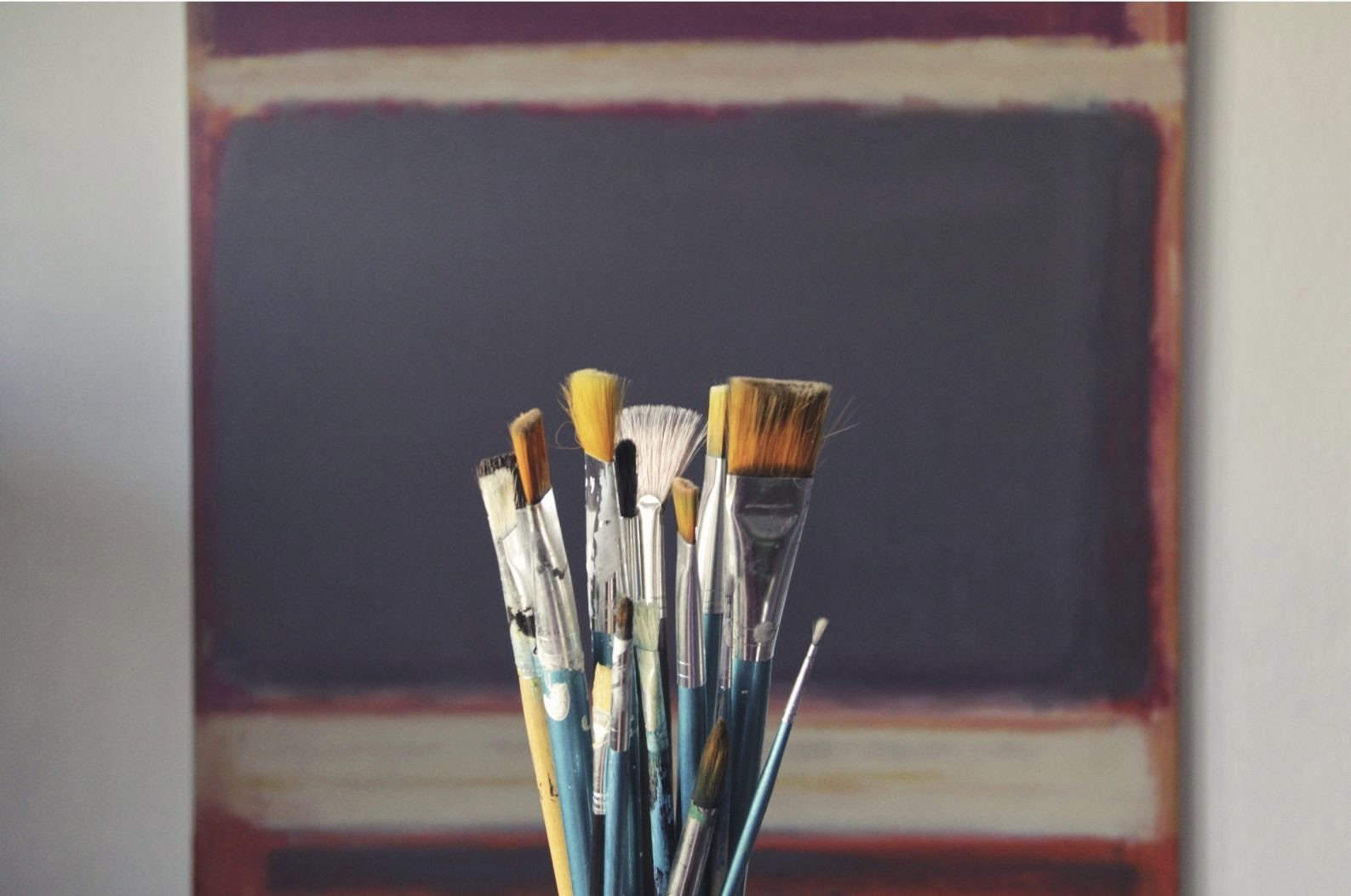Water-soluble oil paints (also known as water-mixable or water-miscible oil paints) are a particular subset of oil paint that are less toxic and easier to clean. To make regular oil paints, pigments are suspended in a medium of drying oil, usually linseed oil.
Water-soluble oil paints are made in the same way, but with an additive that acts as an emulsifier. The emulsifier breaks up the drying oil into droplets, allowing it to be mixed in with water.
This type of oil paint is used in a similar way to regular oil paints, and has a similar application and finish. The main advantage of using water-soluble oil paints is their solubility in water, as the name suggests. This makes for an easy clean-up; no harsh solvents are needed to clean brushes when water soluble oil paint mediums have been used.
Water Soluble Oil Paint Mediums
Similarly to non-water-soluble oil paints, you can add various mediums to alter the drying time and thickness of the oil paint.
The main water soluble oil paint mediums are thinners, drying oil (e.g., linseed oil, safflower oil, stand oil), fast-drying mediums, impasto mediums and varnishes.
Thinner
If you need to thin your water-soluble oil paint, you can use water! This is not possible with regular oil paints as the water and paint are not mixable.
Caution must be exercised if you’re using water to thin your paint: too much water can cause air bubbles in the paint, and the colour of the pigments can lighten as a result. Adding too much water can also speed up the drying time significantly, and reduce the ability of the remaining oil to bind with the paint, making the paint more susceptible to cracking.
This can be reduced by using specialist thinner or a different medium. Specialist water soluble oil paint mediums have an oilier consistency, and are designed for use with water-soluble oil paints.
Drying Oil
Adding additional drying oil to your water-soluble oil paint can give some great benefits such as improving the finish of the paint, increasing/decreasing the drying time depending on which you want to do and adjusting the yellow tint that some oil paints give.
Varnishes
Varnishes are designed to be added to the painting after they are fully dried down (this process is usually a matter of months, not weeks). Varnishing with water soluble oil paint mediums seals in the oil paint, protects the paint from dust and dirt and adds to the longevity of the painting.
Most varnishes can be removed and replaced over time, and come in gloss, matte or satin finishes.
Painting Surfaces
Oil paints work beautifully on a variety of different surfaces, and water soluble oil paints are no exception. Depending on the desired longevity, finish and weight of the painting, different painting surfaces have advantages and disadvantages. The water soluble oil paint mediums that should be used with oil paint is not generally impacted by the painting surface.
Canvas
Read more: 10 Reasons to Paint on Canvas
Canvas comes pre-stretched, ready for use, and also unstretched and unprimed. Its versatility and durability make it the perfect painting surface, especially for oil paints. It is absorbent and stretches easily (cotton canvas more than linen), and it’s lightweight. In addition to this, canvas is fairly inexpensive and comes in a variety of thread counts and thicknesses.
Canvas Board
Canvas boards, often a sheet of canvas with a cardboard backing, are an even more cost-effective painting surface. Canvas boards come ready to use in pre-made sizes. They’re durable and rigid, making them the perfect tool for beginners.
Paper
Heavy paper and cardboard can also make great surfaces for oil painting. Good quality paper is inexpensive, making it the perfect surface for beginners wanting to develop their skills.
Wood
Before canvas took the art world by storm in the early 1800s, wood panel painting was the preferred painting surface. Wood is rigid, durable and has a great texture for painting on. It’s also fairly inexpensive, perhaps more than canvas, although its heaviness and the amount of preparation required to make the surface suitable can put some artists off.
In the 21st century, man-made woods such as MDF are also popular painting surfaces for oil painting. MDF is created from fibres of wood that have been compressed with adhesive under a very high pressure. It’s affordable and very easily accessible, although it needs to be properly primed before taking a paintbrush to it.
There are many water soluble oil paint mediums and painting surfaces, each with their own finish and durability. While some mediums are designed to thin paint and reduce drying time, others are designed to increase longevity and give a glossier finish.

